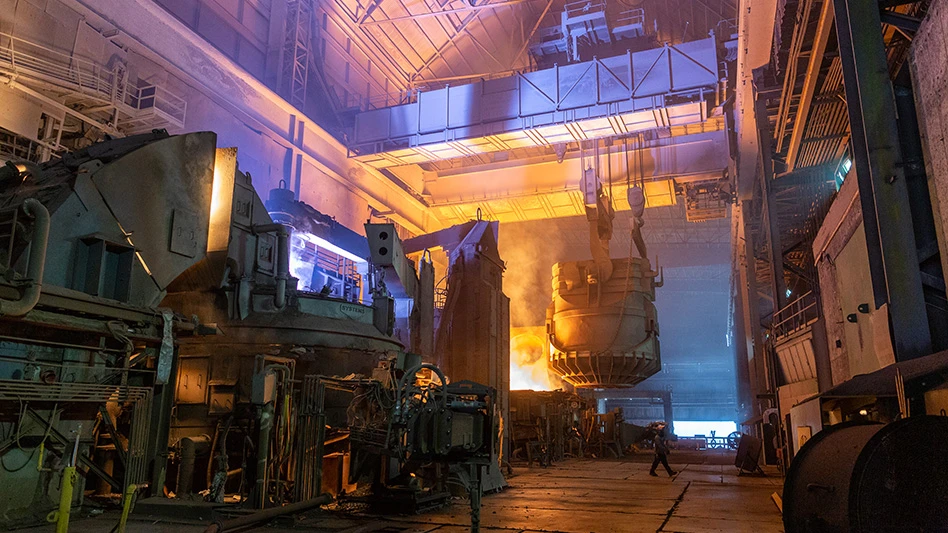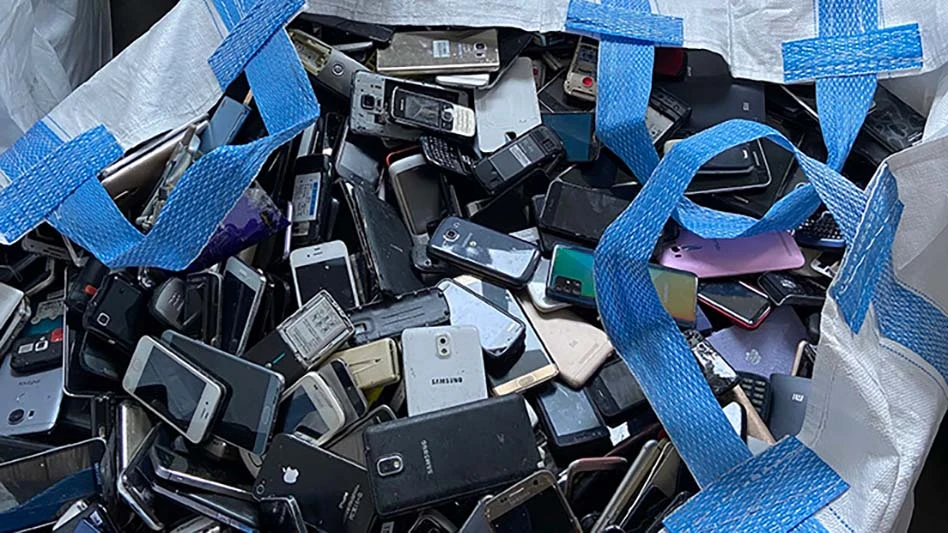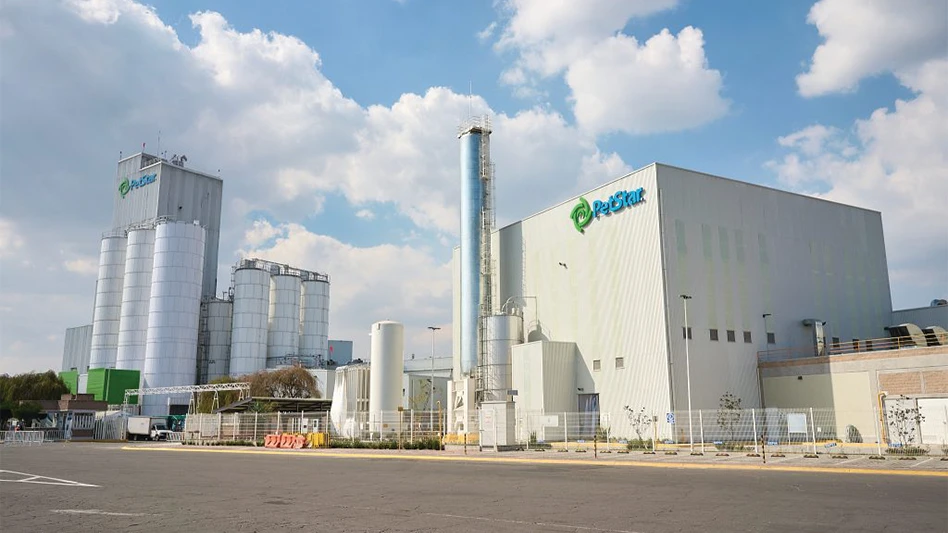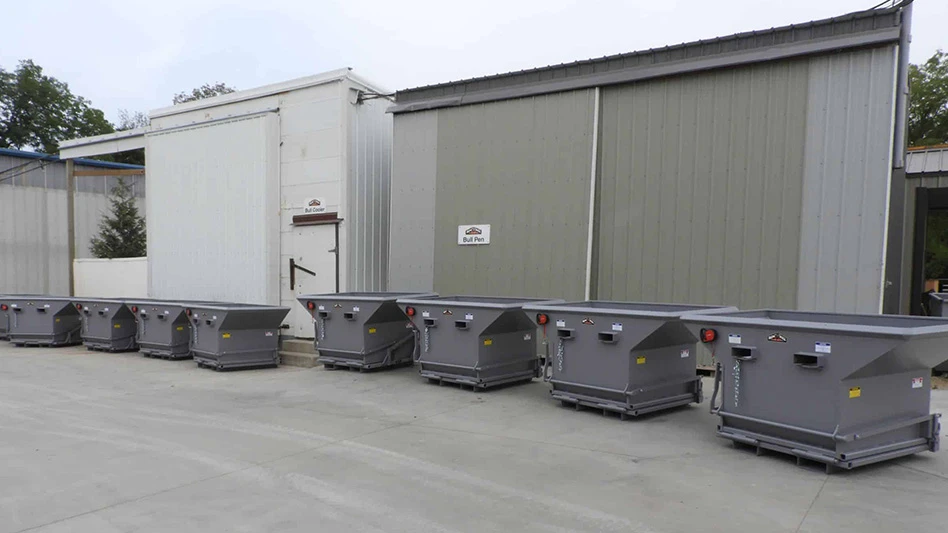 Elmwood Park, New Jersey-based Soundview Paper Co. is a leading manufacturer of Marcal branded tissue products for away-from-home, office, private-label and retail customers. On its website, www.soundviewpaper.com, the company says it demonstrates its “commitment to environmental responsibility by manufacturing products from recycled paper.”
Elmwood Park, New Jersey-based Soundview Paper Co. is a leading manufacturer of Marcal branded tissue products for away-from-home, office, private-label and retail customers. On its website, www.soundviewpaper.com, the company says it demonstrates its “commitment to environmental responsibility by manufacturing products from recycled paper.”
In 2014, Soundview consumed more than 150,000 tons of recovered fiber at its Elmwood and Putney, Vermont, mills that manufacture tissue products, the company’s Vice President of Fiber William Schlenger says. Deinking grades, including sorted office paper (SOP) and coated book stock/printers’ waste (CBS), coated groundwood sections (CGS), postal mix (undeliverable bulk mail) and curbside/junk mail comprise the incoming fiber.
Soundview’s New Jersey mill produces recycled and virgin tissue products, he says, while its Putney plant—one of the oldest operating paper mills in the country—manufactures only recycled products.
Schlenger says Soundview’s consumption of recovered fiber is expected to grow in 2015.
In the Q&A that follows, Schlenger shares the reasons behind Soundview’s growing use of recovered fiber and his outlook for SOP markets in the year ahead.
SDB: What factors are fueling Soundview’s increased use of recovered fiber?
William Schlenger (WS): The growth is fueled by two key developments.
Firstly, in New Jersey we are focused on improving the production off our two world-class paper machines. This means producing more tons of tissue products daily on these assets.
Secondly, in New Jersey we used to produce recycled tissue products on one of our machines and virgin tissue products on the other for a roughly 50/50 split. Due to increased demand for our recycled tissue products, we will be shifting to producing more recycled tissue in 2015 and will continue to increase our recovered fiber purchases to meet that increasing demand. To be able to achieve this shift, we have made some processing changes at our New Jersey facility in 2014 that lets us consume more recovered fiber.
SDB: What trends are you seeing in terms of domestic and overseas demand for SOP and in pricing for this grade?
WS: Overall we see a continued trend of stability in the SOP grade for 2015.
There has been very little movement up or down on prices over the past year. This is driven by the fact that there have been only minor changes in demand for our grades. While there has been some new minor increases in domestic and export demand, there have been offsetting reductions caused by domestic machine closures, some shifts where companies that produce both virgin and recycled products are increasing production of high-end virgin-based products, thus reducing their demand for wastepaper to produce recycled products.
The benefit is that with this price stability, generators of the raw material (our suppliers) have been able to better manage their businesses than when prices fluctuate wildly.
SDB: How has domestic generation of SOP changed in the last 10 years?
WS: A few years ago, there was a lot of doom and gloom about the idea of the paperless office. The reality is that while there have been some changes, this hasn’t happened. With faster, more powerful computers, tablets and phones, the amount of information and data we are able to collect, monitor and analyze is significantly much greater than 10 years ago. But, with this surplus of data, many business people seem to prefer to print these detailed reports on high-speed printers and have all of this information on hand for reference and to share it with many people for analysis. Thus, office paper generation remains stable.
We also have seen increased amounts of office paper being generated in local/residential collection programs with the increase in home offices.
Lastly, we definitely see more of the SOP shipped to us coming in shredded form. With all of the publicity surrounding the risk of identity theft to individuals, as well as companies being hacked and allowing confidential information to be released, there is an ever increasing sensitivity to how information is disposed of. Whether companies or individuals pay outside companies to shred their sensitive printed information or do it themselves on site, it is being done far more often.
SDB: What are some common quality issues you have noticed with the shredded SOP you receive?
WS: There is a greater awareness today within the record destruction/security shredding industry as to what is recyclable and what is not. Regular producers of shredded paper for recycling have learned what items negatively impact the usability of the material and ultimately its value. Today, record destruction professionals as well as the companies doing it in-house understand that if they don’t keep out certain contaminants, they end up with a mixed paper grade with very minimal value.
To maximize the value as an SOP grade, they need to be able to meet their destruction customers’ demand to have the files/records destroyed while at the same time meet the requirements of their recycling customer that the material conform to the grade specifications for SOP. The revenue stream from their paper sales is a key component in the success of their business model.
Years ago there were significant quality problems with material shipped as SOP from record destruction companies. Many of the people who started producing this baled material were not recyclers who understood what the paper mills’ requirements were but entrepreneurs who saw a new opportunity.
In addition, initially much of the material was generated from old records. Often the material was 30, 40, even 50 years old, and the facility was not interested in security but in just trying to “get rid of it” without having to pay a service fee. So there was a lot of “old paper” that was very brittle and had weak fiber. Also, many of the old files had a lot of the continuous form computer printouts that often were produced on green colored groundwood paper that was not good for papermaking. Also, files often contained a lot of plastic microfiche.
Paper mills began to learn that hospital records created a whole new set of issues/problems. Medical files would be just baled as is and they contained X-rays and EKGs that had plastic and magnetic content that threw off meters used for measurement in the pulping process.
The paper industry’s perception became that shredded paper was where suppliers hid contaminants, and many paper mills began to prohibit shredded material or restrict the percentage that was allowed in their SOP (10 to 20 percent), and the rest had to be sheets of paper that were not shredded.
In addition, as the industry became oversupplied with people offering shredding/destruction services, the price being charged to provide this service dropped significantly. When this occurred, these companies realized they needed to ensure a steady revenue stream from the sale of the paper, and they became much more aware of how they managed the quality of the end product they produced.
SDB: What are the benefits and drawbacks associated with consuming SOP in your manufacturing process?
WS: The benefits for us as a consumer of SOP is that in most cases this is a very consistent source of fiber. While, of course, there are seasonal fluctuations, for the most part record destruction operations are generating SOP on a regular basis. Generally, paper mills try to run 24/7/365, except for maintenance outages. So a steady supply of raw material is essential.
The drawbacks are that you need to make sure document destruction companies understand what the quality requirements are so that they can produce a consistently usable end product. They get material in all different forms, and they need to be able to destroy it but, at the same time, keep out contaminants that make it unusable for us.
We have to take the coatings and inks off the paper, handle the glues from any bound pamphlets and from the labels on folders and clean out staples, clips, rubber bands and plastics.
When the fiber is brown or has folders that are colored all the way through (what we call beater dyed), it is problematic, and we can only handle a minimal percentage.
SDB: How can document destruction operations ensure they receive the best value for their SOP?
WS: The first part to maximizing the value is to make the highest quality product you can, so it is desirable due to its consistency and because it allows us to produce a good finished product.
The next part is based on who they sell it to. The wastepaper brokers will say that the paper mill/end user wants to keep the prices down and that they can do a better job of maximizing the revenue from the paper by playing one mill against the other. The paper mills will tell you the broker has to make a profit and by working directly with the customer, document destruction firms eliminate that middleman and can end up with more revenue.
The answer is that there is no one answer. There are some situations where we buy directly from the record destruction company and there are some where we are buying material from brokers.
Our philosophy here at Soundview is that we want to do business with people who are looking for a consistent customer that will take the material all of the time at a fair price. To do that, there are two options: tying it in with an industry trade publication and establishing a price formula that follows any changes in the trade publication. The other option is to have a market price formula that moves based on supply and demand. That is a little trickier to manage as it requires both sides to be able to reasonably assess the fair market price.
SDB: Does your recovered paper pricing vary based on whether your SOP material is shredded or not? How does shred size affect the price you offer?
WS: As I mentioned previously, shredded material used to immediately make people think of inferior quality. Today, some destruction processing facilities do such a good job keeping contaminants to a minimum that they are now commanding premium pricing as mills are beginning to prefer their material.
The size of the paper after shredding can become an issue, but more so in whether the material can be used than in pricing. Paper is made up of fibers that can be long, short or a combination of the two. When paper is shredded, those fibers are cut shorter. If material is shredded into very small pieces or pulverized, then much of the utility of the fiber is gone. I generally say shred to the largest size you can that still meets your destruction clients’ requirements and understand that if you have to go to smaller, you may negatively affect the value of your SOP.
SDB: What is the outlook for the tissue sector in the next one to five years?
WS: The demand for tissue products is very consistent. While we do see some new paper machine production scheduled to come on stream over the next few years, most of it is for high-end consumer products made from pulp.
But, we expect the market demand for Soundview’s cost-effective recycled tissue, towel and napkin products to continue to grow, and we expect the record destruction segment of the business to be an important part of it.
William Schlenger is vice president of fiber for Soundview Paper Co., Elmwood, New Jersey. More information on Soundview Paper is available at www.soundviewpaper.com, and Schlenger can be contacted at wschlenger@soundviewpaper.com.
Latest from Recycling Today
- Autocar releases Smart Battery Cable to advance refuse truck fire safety
- PLASTICS launches Positives of Plastics website
- Impact Air Systems launches compact ZAC400
- PCA to shut down paper machines at Washington containerboard mill
- BMRA provides landfill guidance for UK shredder operators
- Fornnax high-capacity tire recycling plant
- EU introduces measures to secure raw materials, strengthen economic security
- US Steel to restart Illinois blast furnace





